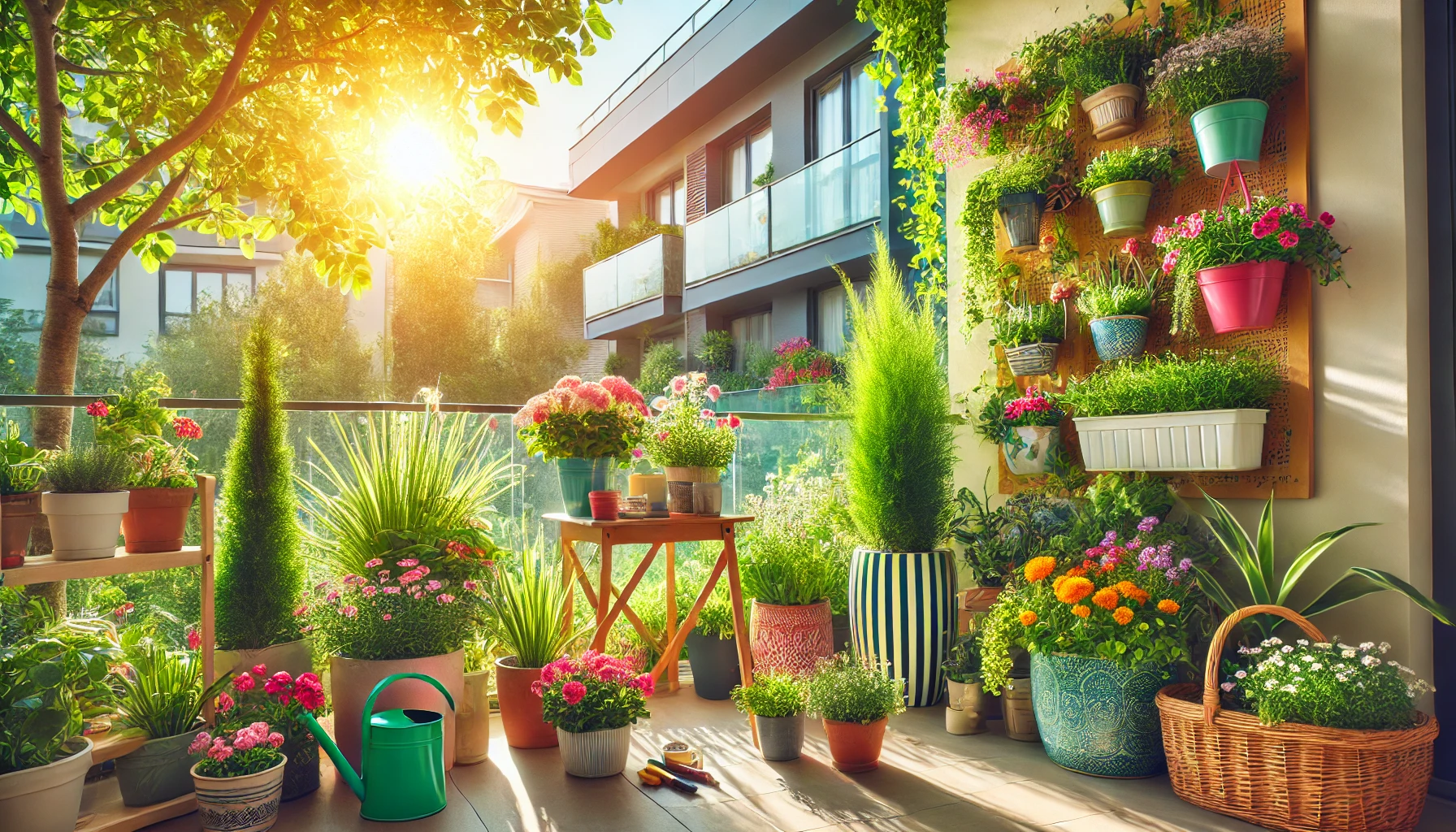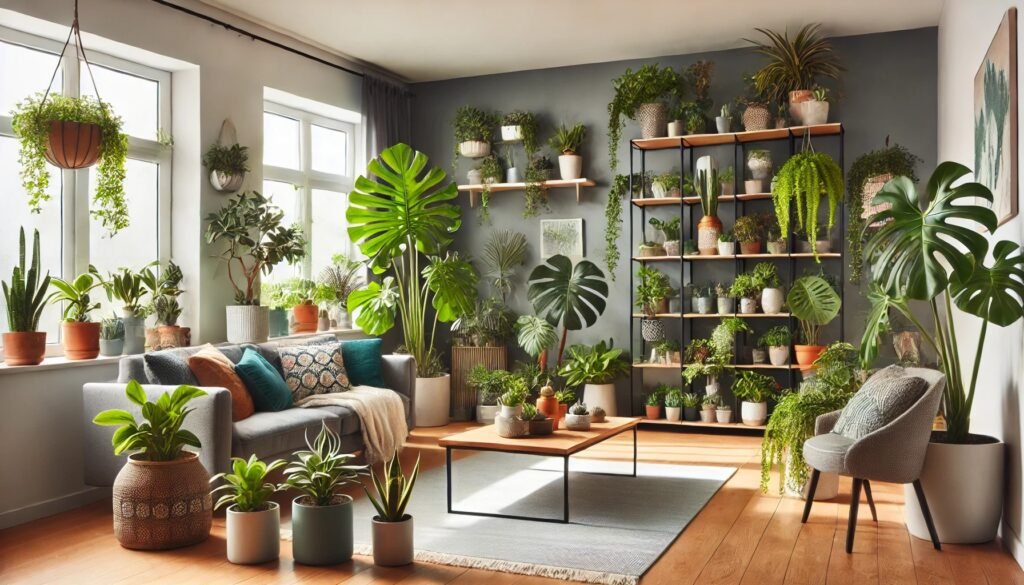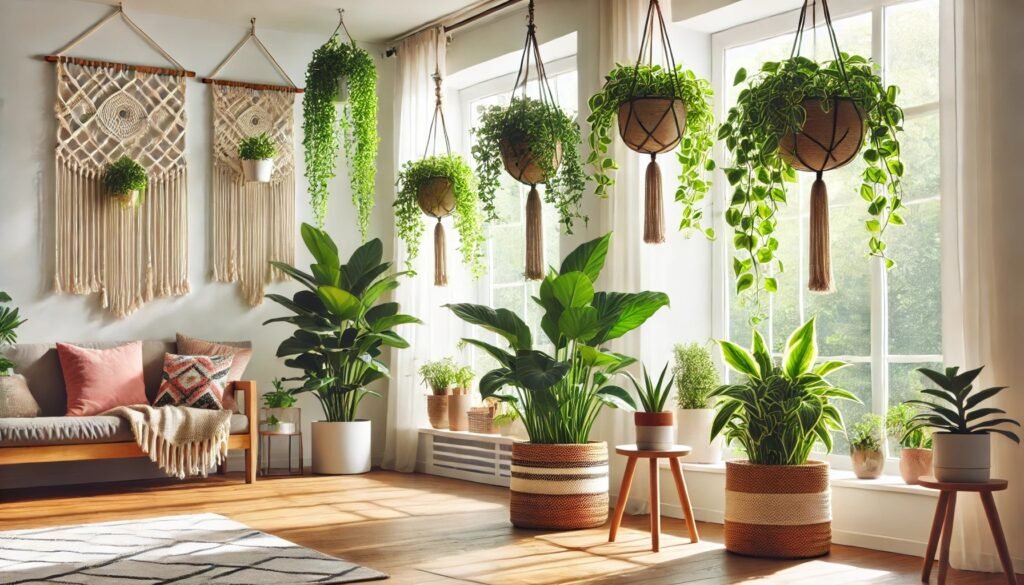
If you love plants but don’t have much space, container gardening might be the perfect solution. It’s ideal for homeowners with limited outdoor areas or renters who can’t plant directly in the ground. Whether you’re using a small balcony, patio, or even a windowsill, container gardening allows you to enjoy a lush, vibrant garden with minimal space.
Why Container Gardening Works
Container gardening is an easy and versatile way to grow plants in any environment. It’s perfect for urban dwellers with little to no yard space or homeowners who want to add greenery to specific areas of their property. One of the best things about it is the ability to move your plants around. Whether you’re chasing the sun or rearranging your outdoor decor, container gardens provide the flexibility that traditional gardens don’t.
Another great thing is that you can control the soil, light, and water conditions more easily than with ground planting. This means it’s ideal for both seasoned gardeners and beginners.
Getting Started: The Essentials
Starting a container garden is simple. All you need is a pot, soil, and a plant. However, there are a few key tips to keep in mind when setting up your container garden.
Choosing the Right Containers
The first step in container gardening is selecting the right pots. While it’s tempting to pick pots based solely on appearance, there are a few practical factors to consider. For instance, pots made of porous materials like terracotta allow the soil to breathe but dry out more quickly. On the other hand, plastic or glazed pots retain moisture better, which can be helpful in hot climates.
Make sure your pots have drainage holes. This is crucial because waterlogged soil can lead to root rot. If your chosen container doesn’t have holes, you can drill some yourself or use it as an outer decorative pot and place a smaller pot with drainage inside it.
The size of your container also matters. Small pots work well for herbs and flowers, while larger pots are better for vegetables or shrubs. Keep in mind that the bigger the pot, the more room the roots have to grow, and the less frequently you’ll need to water.
Potting Soil: What You Need to Know
Don’t use garden soil for container gardening. It’s too heavy and compacts easily, making it difficult for water to drain properly. Instead, opt for a high-quality potting mix. These mixes are designed specifically for containers and provide the right balance of drainage and aeration.
Some potting mixes come with added fertilizers or moisture-retaining agents, which can be helpful, especially for beginners. However, if you’re planting edibles, consider using organic potting soil to ensure you’re growing in a chemical-free environment.
Designing Your Container Garden
Once you’ve got the basics, it’s time to start designing your garden. This is where your creativity can really shine. Whether you prefer a formal, symmetrical look or a more eclectic mix of plants, container gardening lets you experiment with colors, textures, and arrangements.
Thrillers, Fillers, and Spillers
One popular method for designing a visually appealing container garden is the “”thriller, filler, spiller”” approach. This technique involves choosing three types of plants for each container:
- Thrillers: Tall, eye-catching plants that add height and drama to your arrangement.
- Fillers: Medium-sized plants that fill in the middle of the pot and add bulk.
- Spillers: Trailing plants that spill over the edges of the pot, softening the arrangement.
For example, a tall ornamental grass can serve as your thriller, colorful flowers like petunias can be fillers, and trailing ivy can be the spiller.
Using Color and Texture
Another key to beautiful container gardens is playing with color and texture. Mix plants with different leaf shapes and textures to create depth and interest. For instance, pairing soft, feathery plants like ferns with bold, structured plants like succulents can create a striking contrast.
When choosing colors, think about how your plants will look together. You can opt for a monochromatic palette with varying shades of the same color, or go for a vibrant mix of complementary colors. The choice is yours.
Plant Suggestions for Container Gardens
Choosing the right plants for your container garden depends on your space and climate. Here are a few ideas to get you started:
- Herbs: Basil, thyme, mint, and rosemary thrive in pots and add both beauty and functionality to your space.
- Flowers: Geraniums, petunias, and marigolds are colorful, easy-care choices for sunny spots.
- Vegetables: Tomatoes, peppers, and lettuce grow well in containers, especially in smaller spaces.
- Succulents: If you’re in a dry climate or want low-maintenance plants, succulents are perfect for containers.
Caring for Your Container Garden
Container gardening does require some upkeep, but it’s relatively easy to manage. The main factors to consider are watering, feeding, and maintaining your plants.
Watering and Humidity
One of the most important aspects of container gardening is watering. Because containers dry out faster than in-ground gardens, you’ll need to water your plants more frequently. As a general rule, water when the top inch of soil feels dry to the touch. In hot weather, this may mean watering once a day.
Keep in mind that smaller pots dry out faster than larger ones. Additionally, the type of material your pot is made from will affect how quickly the soil dries out. In humid climates, you might water less frequently, while in dry areas, more frequent watering may be necessary.
Soil, Light, and Temperature
Since you’re controlling the environment, it’s important to choose the right soil for your plants. Use a potting mix specifically designed for container plants. These soils are lighter and drain better than garden soil.
Most container plants prefer full sun, which means they need at least six hours of direct sunlight each day. However, some plants, like ferns or hostas, prefer partial shade, so make sure you know the light requirements for each plant.
Temperature can also affect your plants. While most container plants thrive in moderate temperatures, be sure to protect your pots from extreme heat or cold. In colder climates, you can bring your containers indoors during winter months.
Fertilizing
Because the nutrients in potting soil are limited, you’ll need to fertilize your plants regularly. A slow-release fertilizer mixed into the soil at planting time is a good start. You can also use a liquid fertilizer every couple of weeks during the growing season to keep your plants healthy and thriving.
Common Challenges and How to Overcome Them
Like any garden, container gardening can come with its challenges. Fortunately, most issues are easy to fix.
- Overwatering: One of the most common problems in container gardening is overwatering, which can lead to root rot. Make sure your containers have drainage holes, and only water when necessary.
- Pests: Container plants can still attract pests like aphids and spider mites. To prevent infestations, regularly check your plants and remove any bugs by hand or with an insecticidal soap.
- Nutrient Deficiency: If your plants are yellowing or growing poorly, they might not be getting enough nutrients. Apply a balanced fertilizer to give them a boost.
Final Thoughts
Container gardening offers endless possibilities for adding greenery to even the smallest spaces. Whether you’re growing herbs on a sunny windowsill or creating a lush patio oasis, container gardening allows you to enjoy the beauty of plants without the need for a large yard. With the right care and creativity, you can transform your outdoor or indoor space into a stunning garden.
Stay connected with the world of plants! Subscribe to Phylofy for expert gardening tips, DIY projects, and eco-friendly inspiration. Join our community and nurture your love for nature. Don’t miss exclusive content and updates. Subscribe now!



